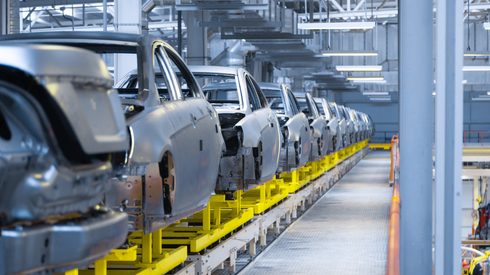The initiative includes plans for a lithium conversion and battery recycling “mega-flex” facility in Europe, as well as expansion of existing facilities in La Negra, Chile; Kemerton, Australia and Silver Peak, Nevada, in the US, as well as facilities in Qinzhou and Meishan in China.
The expansion of existing facilities alone will triple Albemarle’s sales volumes to more than 300,000 tonnes per year of lithium carbonate equivalent (LCE) by 2027, Scott Tozier, Albemarle’s executive vice president and chief financial officer, said during the call.
The company’s growth initiative also includes its March 27 proposal to acquire Liontown Resources, which owns two lithium projects in Australia, in addition to the mega-flex facility in Europe.
The proposed lithium conversion and recycling facility in the EU will strengthen Albemarle’s footprint in the continent, according to its earnings presentation. The new facility would join the company’s existing Langelsheil production facility in Germany.
“We are looking to lithium conversion and recycling facility in Europe,” Albermarle chairman of the board Kent Masters said.
“Another new facility in Europe shows how interest in recycling has been heating up over the last year,” Fastmarkets analyst Julia Harty said.
But a great number of recyclers joining the market introduces a challenge, according to Harty: tight competition for scrap battery feedstock is causing recyclers to run at reduced capacity, which, in turn, eats into their profit margins.
“Recyclers with good offtake agreements and cash to survive the tough times will be well-placed for when the amount of end of life (EOL) scrap batteries starts to pick up significantly toward the end of the decade,” Harty said. “Until then we might see the number of recyclers rise and then contract to a number more in proportion to the amount of feedstock.”
Battery recycling market still in its infancy
Currently 68% of the world’s battery production capacity is in Asia, followed by 18% in Europe and 14% in the US, according to Fastmarkets data. But Fastmarkets analysts expect this distribution to be 52% in Asia, 31% in Europe and 17% in the US by 2033.
“So, the European battery market is still in its early days,” Harty said.
Fastmarkets analysts anticipate that the mandated minimum amount of recycled metal needed in new batteries in Europe in 2030 will be 4% for lithium and nickel and 12% for cobalt, rising to 10% for lithium, 12% for nickel and 20% for cobalt by 2035.
“We’re hearing that in Korea the level of secondary battery raw materials needed in new batteries is so high that the recycled metals are actually trading at a premium in that region,” Harty said. “It shows the importance of regulations in driving forward the battery recycling market.”
On April 5, Fastmarkets announced a proposal to launch weekly price assessments for black mass payable indicators, delivered South Korea.
Albemarle previously announced on March 22 that it will be entering the lithium battery recycling business with the building of a similar mega-flex facility in Richburg, South Carolina, that will process diverse lithium stock, including lithium from recycled lithium batteries.
The Richburg facility is “strategically placed in the Southeast, in the growing [electric vehicle] and battery resource region,” Masters said.
Albemarle expects the construction of the Richburg facility to start in late 2024.
Want more insights and forecasts for the battery recycling market?
Keep up to date with global market insights and predictions for the battery recycling market with the Fastmarkets NewGen Battery Recycling Outlook.






